As a white man who grew up in Texas, John Howard Griffin was curious about the lives of African Americans who lived under America’s Jim Crow system in the late 1950s. So, he embarked on a bold experiment. He decided to darken his skin, live as a black man, and write a book informing his fellow white citizens about how it feels to be on the other side of the racial divide.
“How else except by becoming a Negro could a white man hope to learn the truth?” he wrote on the first page of the book, titled Black Like Me. “The Southern Negro will not tell the white man the truth. He long ago learned that if he speaks a truth unpleasing to the white, the white will make life miserable for him. The only way I could see to bridge the gap between us was to become a Negro.” Published in 1961, Black Like Me went on to sell 10 million copies all over the world.
 John Howard Griffin, author of Black Like Me, in both his guises.
John Howard Griffin, author of Black Like Me, in both his guises.
Psychologists have a name for Griffin’s experiment: perspective taking, which involves being able to see the point of view of someone you normally consider to be part of an outgroup. Griffin decided he needed to be able to see the world from the perspective of a black man in order to more fully understand African Americans and their struggle for civil rights.
But Griffin didn’t just take someone else’s perspective. He also gave a perspective to countless white Americans who had never considered what it was like to live under America’s system of anti-black discrimination. Research is finding that this “perspective giving”—being able to offer another point of view, especially if you’re part of an outgroup—can be just as important to social change as perspective taking.
Of course, Black Like Me could never supplant the voices of African Americans themselves. As activist Stokely Carmichael (later known as Kwame Ture) said at the time, Black Like Me “is an excellent book—for whites.” According to Griffin himself, his memoir was meant only as a bridge for European Americans who had trouble listening to African Americans, in hopes that it could open their hearts and minds to the experiences of other people. His book stands today as an extraordinary experiment in both perspective taking and perspective giving.
Together, they’re powerful tools for bridging our differences, particularly between groups that may not have an equal power dynamic. When a perspective has been marginalized by the larger society, says Beyond Conflict Innovation Lab lead scientist Emile Bruneau, it’s important to allow that one to come forward first—and for members of the dominant group to then try to take it in before giving their own. Bruneau and other researchers are studying perspective taking and perspective giving in domestic and international contexts. What they’re finding could help more Americans negotiate their differences.
Empathy isn’t enough
Perspective taking is not precisely the same thing as empathy—and if you’re trying to build bridges between different groups, it’s important to understand the difference. We often think about emotional empathy as being able to feel someone else’s emotions, whether it’s the pain of a friend or the joy of a family member. But empathy has its limits.
In late 2019, a group of researchers set out to test the impact of empathy on polarization between Democrats and Republicans. First, they used survey data gathered in 2016 to see how individuals with greater empathic concern would feel toward partisans on the other side, using measures of social distance, such as how upset they would feel if a family member married a member of the opposite party. The researchers also ran experiments to measure how empathic concern affects partisan bias in situations like wanting to censor a speaker from the opposite political side.
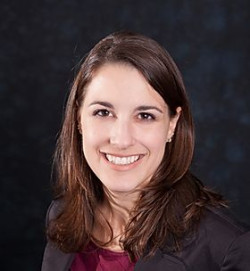 Elizabeth Simas, associate professor at the University of Houston.
Elizabeth Simas, associate professor at the University of Houston.
While we might hope that empathy would fuel tolerance, that’s not what this study found. According to lead author Elizabeth Simas, an associate professor at the University of Houston, empathic concern did seem to be associated with less discomfort with the other side—but at the same time, it came with more negative feelings. Those higher in empathic concern expressed a greater desire to censor out-party speakers, as well as “more schadenfreude when a person was injured trying to hear a speaker from the opposite party.”
That means that emotional empathy—trying to feel what someone else is feeling—was not found to be particularly useful in reducing polarization. In fact, it appeared to make things worse.
Why? One of the problems with emotional empathy is that we tend to feel it more towards ingroups—people like us and people we can relate to—than to outgroups, who seem so different from us. If our ingroup is attacked by an outgroup, empathic concern doesn’t necessarily help. But we shouldn’t confuse emotional empathy, which is often based on gut responses, with perspective taking, which asks us to do the conscious and intellectual work of taking the viewpoint of our opponents, even if we have no emotional warmth towards them.
“Empathic concern is an emotional form of empathy, while perspective taking is a more cognitive form of empathy,” says Simas. “That is, empathic concern involves reacting to another’s suffering with feelings of sympathy or compassion. In contrast, perspective taking does not involve an emotional reaction to another person’s situation.” The goal isn’t to feel what they’re feeling. Instead, it’s to understand why they feel the way they do.
That doesn’t mean that empathy is useless. It can help us grow closer to people, especially our loved ones. But we should be wary of its downsides, and be cognizant of the reality that sometimes it is more appropriate to engage in perspective taking instead. This seems to be particularly true of trying to understand our opponents.
Perspectives across borders
Many of our conflicts take place across international borders, which divide people into warring or skeptical camps. But what if we were able to see the situation from the point of view of adversaries?
That’s the question Bruneau and MIT neuroscientist Rebecca Saxe sought to answer in a 2012 study that looked at how perspective taking and perspective giving can help bridge divides.
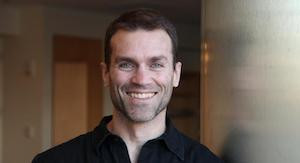 University of Pennsylvania psychologist Emile Bruneau.
University of Pennsylvania psychologist Emile Bruneau.
Bruneau says he originally became interested in the topic when he was teaching high school many years ago. He’d host “dialogue sessions” between white and non-white kids.
“And what seemed to happen is the white kids would take a lot from these experiences, because they would be exposed to perspectives they’d never considered before,” says Bruneau. But the non-white kids (who were a minority in this school) would generally gain less from the experience, perhaps because they were in an environment where they were already exposed to majority points of view constantly.
So, Bruneau developed a hypothesis that perspective taking “wouldn’t really work for members of a minority or marginalized group.” But he also came to wonder if combining perspective taking with perspective giving could help bridge divides between members of majority and minority groups.
In their study, Bruneau and Saxe brought together two pairs of groups across international borders. They took Mexican immigrants and white Americans, and Israelis and Palestinians, and put them through a set of experiments that involved both perspective taking and perspective giving.
In the Middle East, Bruneau was shocked at how little interaction there was between the groups. “The first [Palestinian participant] after the study came up and thanked me and said, ‘I’d never had the opportunity to talk with an Israeli before,’” he says. “That was shocking to me just because we were standing in Ramallah, which is eight miles away from Israel.”
With both pairs of groups, the researchers found that dominant group attitudes toward the minority improved significantly after hearing their perspective. Meanwhile, the chance to give their perspective seemed to help the minority group members to see the majority in a more positive light.
The fact that both experiments showed similar results despite different cultural and geopolitical contexts suggests the one-two punch of perspective giving and perspective taking can prove effective across divides in a multitude of situations.
Although Bruneau’s research suggests that perspective giving is more valuable for minority or marginalized groups while perspective taking is more valuable for majority or dominant groups, he says that in practice, it’s probably best for participants to do both—but it’s the group with less social power who should go first. “That serves the psychological needs of both sides,” he says.
Giving and taking
Organizations in the United States are putting these scientific insights to work in closing America’s political divide.
When Nashville, Tennessee, found itself divided over rising immigration and diversity, the Tennessee Immigrant and Refugee Rights Coalition created Welcoming Tennessee, which set out on an ambitious project aimed at integrating the immigrant population into the region, largely by sharing stories and perspectives.
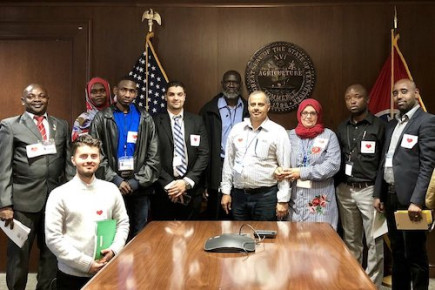 At "Refugee Day on the HIll," members of the Tennessee Immigrant and Refugee Rights Coalition take their stories directly to state legislators.
At "Refugee Day on the HIll," members of the Tennessee Immigrant and Refugee Rights Coalition take their stories directly to state legislators.
Thanks to the work of Welcoming Tennessee, the city’s social and political climate dramatically changed in a matter of a few years. In 2009, campaigners pushed a ballot initiative that would have required all government documents to be conducted in English only. But thanks partly to the work of Welcoming Tennessee, the ballot measure failed, with 57 percent of voters coming out against it. In 2014, Nashville opened an Office of New Americans, specifically tasked with working with immigrants and refugees to help them acclimate to life in the city. One of the programs the city runs now dispatches Parent Ambassadors—volunteers who come from the same country or share a native language—to work with immigrant families and help them navigate the school system.
This local work was so successful that the effort went nationwide. Since 2009, Welcoming America has been working with communities all over the country to help them overcome skepticism towards immigrants and refugees.
Welcoming America taps local community figures—municipal officials, civil society leaders, and refugees and immigrants themselves—to help move communities across what the organization calls the “welcoming spectrum.” The goal is to bring communities from “fearful” to “tolerant” to, finally, “welcoming.”
A key part of this work is empowering immigrants and refugees to tell their own story to elected officials and others.
For instance, their One Region Initiative—which aims to build a more inclusive culture for immigrants and refugees in the Atlanta, Georgia, area—held a series of listening sessions that included 142 participants, who ranged from documented and undocumented immigrants to refugees to U.S.-born citizens. These sessions allowed the organization to directly hear from people whose lives were affected by their policymaking.
Welcoming America identified several key concerns from these sessions, with the top two being a lack of English proficiency and fear of deportation. The listening sessions also generated ideas for a plan of action, which included a question-and-answer session with local elected officials, as well as more conversations across racial divides.
Rachel Peric, the executive director of Welcoming America, says that the events help “people understand that while they may share a common humanity, their experiences may be different, and I think those stories and the active listening to those stories sets the stage for policymakers to understand how people are differently impacted by all kinds of policy.”
If you would like to practice the skill of taking in other people’s perspectives, Welcoming America is a great place to start. We have also profiled other organizations that will allow you to practice this skill, from the One America Movement, which facilitates dialogue between political partisans, to the website AllSides, which is designed to allow you to see how people across the political spectrum view news events.
If John Griffin could risk discrimination, expulsion, or worse to see how his fellow Americans of African descent lived their lives, we should be willing to step out of our comfort zones and consider the power of perspective taking. And although we don’t live in the mid-20th century American South and the era of Jim Crow, the lessons of Griffin’s bold experiment are relevant in all sorts of contexts. As he writes in a 1979 look back on Black Like Me:
All human beings face the same fundamental problems of loving and of suffering, of striving toward human aspirations for themselves and their children, of simply being and inevitably dying. These are the basic truths in all people, the common denominators of all cultures and all races and all ethnic categories…
I believe that before we can truly dialogue with one another we must first perceive intellectually, and then at the profoundest emotional level, that there is no Other—that the Other is simply Oneself in all the significant essentials.
This alone is the key that can unlock the prison of culture.

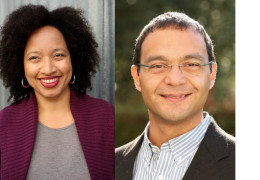




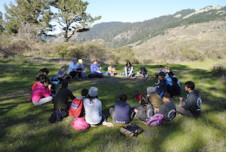
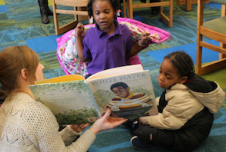


Comments